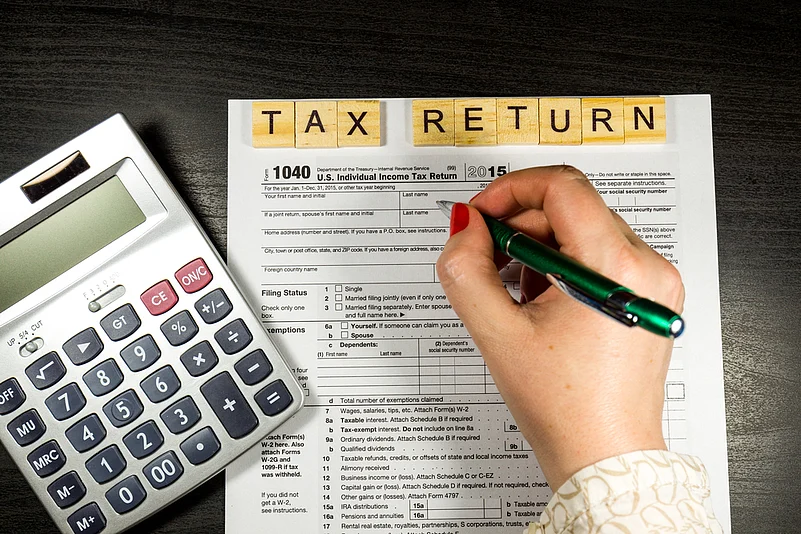As the deadline for income tax filling approaches, understanding ways to optimise your tax liability is significant to creating better finances. Did you know? You have an option to choose between the old or the new tax regime. However, also know that the new tax regime became the default tax regime from financial year 2023-24. This means that starting April 1, 2023, if an individual taxpayer did not opt for the old tax regime, the employer would be deducting tax on salary (TDS) based on the new tax regime.
Here’s a simple guide to help you decide how to switch between them:
Sachin and Riya are a typical Indian couple. Sachin works in an IT firm, while Riya is a freelance content writer. As the deadline approaches, they sit down to tackle their income tax returns. This year, they’re faced with a choice: should they stick with the old tax regime or switch to the new one?
Advertisement
Difference between both tax regimes:
Old Tax Regime: This regime is like a buffet with various deductions and exemptions, including Section 80C (investments in PPF, ELSS, etc.), House Rent Allowance (HRA), and Leave Travel Allowance (LTA). If you have substantial deductions, this might be the best option for you.
New Tax Regime: Introduced in Budget 2020, this regime offers lower tax rates but without most deductions and exemptions. It’s simpler and might benefit those with fewer eligible deductions.
Tax Rate difference between the Old and the New tax regime:
Advertisement
Old Regime:
Income up to Rs 2.5 lakh: No tax
Rs 2.5 lakh - Rs 5 lakh: 5% above Rs 2,50,000
Rs 5 lakh - Rs10 lakh: Rs 12,500 + 20% above Rs 5,00,000
Above Rs 10 lakh: Rs 1,12,500 + 30% above Rs 10,00,000
New Regime u/s 115BAC:
Income up to Rs 3 lakh: No tax
Rs 3 lakh - Rs 6 lakh: 5% (above Rs 3 lakh)
Rs 6 lakh - Rs 9 lakh: Rs 15,000 + 10% above Rs 6,00,000
Rs 9 lakh - Rs 12 lakh: Rs 45,000 + 15% above Rs 9,00,000
Rs 12 lakh - Rs 15 lakh: Rs 90,000 + 20% above Rs 12,00,000
Above Rs 15 lakh: Rs 1,50,000 + 30% above Rs 15,00,000
(Source: Income Tax Official Website)
Sachin’s employer has asked him to choose his preferred tax regime at the start of the financial year. He is accustomed to the old regime and has numerous deductions through investments and home loan interest. Riya, however, finds the old regime’s complexity overwhelming and prefers a straightforward approach.
How To Switch Between Old and the New Tax Regimes?
First, both Sachin and Riya will assess their tax liability. They calculate their tax liability under both regimes by using online tax calculators from the Income Tax Department’s website to see which option is more favourable.
Advertisement
1. For Salaried Taxpayers (like Sachin):
Inform your employer at the beginning of the financial year about your preferred regime. Employers adjust TDS (Tax Deducted at Source) accordingly. Sachin needs to tell his HR department which regime he prefers.
2. For Self-Employed or Freelancer Taxpayers (like Riya):
You can make your choice directly while filing your ITR. Riya can decide at the end of the financial year, which gives her more flexibility.
Step-by-step guide on how to switch between regimes while filing ITR:
First, log in to the official Income Tax e-filing portal using your credentials.
Next, select the appropriate ITR Form. Choose the ITR form that matches your income sources (for example, ITR-1 for salaried individuals, and ITR-4 for professionals).
Choose the Tax Regime: While filling out the ITR form, you will find a section under “General Information” to select your preferred tax regime.
Opt for Old Regime if you are claiming deductions and exemptions.
Opt for the New Regime if you prefer the simplified structure with lower tax rates but without deductions.
While Sachin opts for the old regime due to his significant deductions, Priya chooses the new regime for its simplicity.
Verify and Submit: After filling out the form and making your regime selection, verify all details carefully. Submit the form and complete the e-verification process.
For common taxpayers like Sachin and Riya, choosing between the old and new tax regimes depends on individual financial situations and preferences. By assessing your tax liability under both regimes and making an informed choice, you can optimise your tax payments.















 Just one email a week
Just one email a week